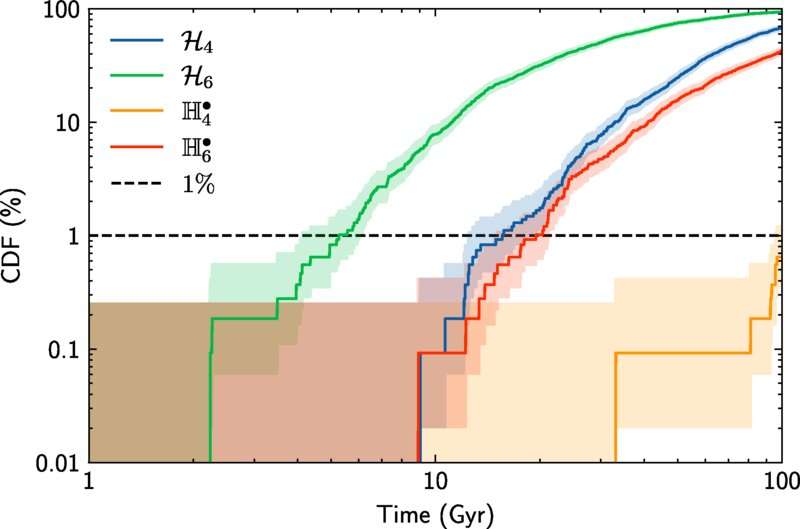May 4, 2023 report
This article has been reviewed according to Science X's editorial process and policies. Editors have highlighted the following attributes while ensuring the content's credibility:
fact-checked
peer-reviewed publication
trusted source
proofread
A new theory to explain the stability of the solar system

A trio of astrophysicists at Sorbonne Université has developed a new theory to help describe the stability of the solar system. In their paper published in the journal Physical Review X, Federico Mogavero, Nam Hoang and Jacques Laskar, describe their theory and what it suggests about the nature of the solar system.
For many years, space enthusiasts have wondered about the nature of the stability of the solar system. Hundreds of years ago, after scientists discovered other planets and proved that Earth, along with them, orbited the sun, questions arose about the possibility of the planets undergoing changes to their orbits leading to collisions or disappearing into the sun or outer space.
Even Newton was uneasy about his observations—after applying his theories of motion and gravity, he found it likely that the gravitational forces that the planets exert on each other would lead to inevitable changes in their orbits and the deterioration of the solar system. But unwilling to accept his own science, he suggested that the system was reset periodically by God, preventing its demise.
Over the ensuing years, space scientists have gone back and forth on the issue, with some suggesting that the solar system will self-destruct over time and others insisting that there must be some force that keeps the planets in their proper path—otherwise, how could it have persisted for so long?
Things began to change as computers were applied to the problem, allowing for the creation of models that used past and current parameters to predict the likely future of the solar system. Such models showed that the element of chaos was unavoidable. Now, most planetary scientists agree that the solar system is unstable and that it is slowly tearing itself apart.
The newer models also give astronomers a clearer look at the future—they show Mercury going rogue first, for example, either by colliding with Venus or falling into the sun. But there is still one major problem—most of the models show the solar system destabilizing over millions of years but remaining intact for billions of years.
In this new effort, the research trio has developed a theory to explain this apparent discrepancy. In short, they suggest that there are hidden structures within the motion of the planets that help to stabilize them. They believe that such structures keep the destabilization in check, slowing planets down and preventing them from straying in any given direction. They further suggest that a sort of fast-chaos manifests itself on the orbit of a given planet, which in turn holds destabilization in check, preventing the planets from wandering. And finally, they suggest this mechanism acts along the position of the orbit of a planet, not on its shape.
More information: Federico Mogavero et al, Timescales of Chaos in the Inner Solar System: Lyapunov Spectrum and Quasi-integrals of Motion, Physical Review X (2023). DOI: 10.1103/PhysRevX.13.021018
Journal information: Physical Review X
© 2023 Science X Network





















